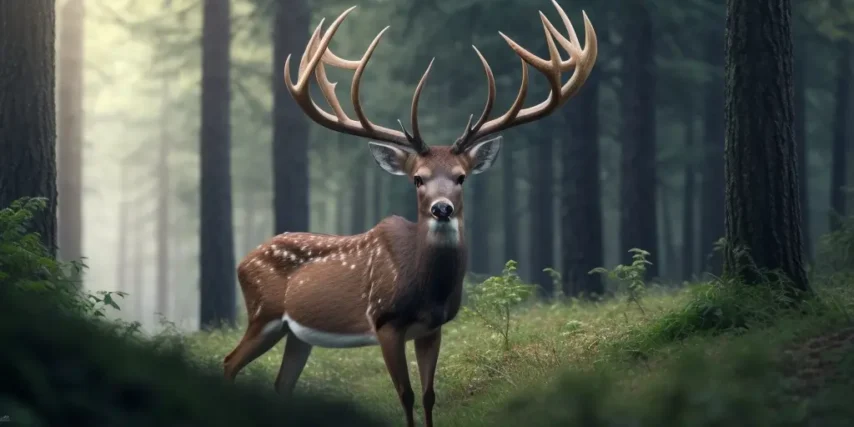The Majestic World of Deer Antlers: A Closer Look at Nature’s Crown Jewels
Deer antlers, the crown jewels of the animal kingdom, captivate the imagination with their intricate beauty and impressive size. These remarkable structures are not only a symbol of the majesty of the deer species but also serve essential biological functions. In this article, we’ll delve into the fascinating world of deer antlers, exploring their growth, purpose, and the astounding variations that can be found in these natural works of art.

Understanding Antler Growth:
Antlers are unique among the animal kingdom, as they are the fastest-growing living tissue known to man. The process of antler growth, known as antlerogenesis, is a remarkable feat of nature. It begins in early spring when male deer, or bucks, shed their old antlers, marking the start of a new cycle.
The growth of antlers is fueled by a surge in testosterone levels in the buck’s body. Velvet, a highly vascularized skin, covers the antlers during their initial growth phase. This velvet supplies essential nutrients and facilitates the rapid development of the bony structures underneath.
Factors Influencing Antler Size:
While genetics play a crucial role in determining antler size, various environmental and health factors also contribute to the final outcome. Adequate nutrition, for instance, is essential for bucks to develop large and robust antlers. Regions with nutrient-rich vegetation and suitable climates often produce deer with more substantial antlers.
Age is another significant factor influencing antler size. Bucks typically experience peak antler growth between the ages of 4 and 7, with antlers gradually reaching their maximum size and complexity during this period. Older bucks, having gone through multiple antler growth cycles, tend to display more massive and intricately branched antlers.

Species Variations:
The world of deer is diverse, with numerous species exhibiting a wide range of antler variations. The white-tailed deer, one of the most common deer species in North America, typically has antlers with forward-curving main beams and multiple points, creating an impressive yet elegant appearance.
In contrast, the mule deer, another prevalent species in North America, showcases bifurcated, or forked, antlers that branch out widely, creating a distinctive “mule-like” appearance. Each species has evolved unique antler characteristics, adapting to its environment and social structure.
Record-Breaking Antlers:
The allure of record-breaking antlers has long captured the attention of hunters, wildlife enthusiasts, and researchers alike. The Boone and Crockett Club, an organization dedicated to wildlife conservation, maintains a record book that documents exceptional big game trophies, including deer with extraordinary antlers.
The current world record for the largest typical white-tailed deer antlers belongs to a buck harvested in 2003 by Tony Lovstuen in Iowa. The massive set of antlers scored an astounding 307 5/8 inches, a testament to the potential grandeur that these natural appendages can achieve.

As the fascination with deer antlers continues to grow, it is crucial to address the ethical considerations surrounding their collection and the impact on deer populations. Sustainable hunting practices, regulated by wildlife management organizations, ensure that the deer population remains healthy while allowing enthusiasts to appreciate the beauty of these creatures.
Deer antlers stand as one of the most captivating and extraordinary features in the natural world. From their rapid growth to the myriad factors influencing their size, antlers tell a tale of adaptation, survival, and the intricate dance between genetics and environment. As we marvel at the record-breaking antlers and diverse species variations, it is essential to approach the subject with a sense of appreciation for the wonders of nature and a commitment to responsible conservation practices. The deer’s crown jewels not only symbolize the majesty of the animal kingdom but also serve as a reminder of the delicate balance required to preserve these extraordinary creatures and their awe-inspiring antlers for generations to come.







